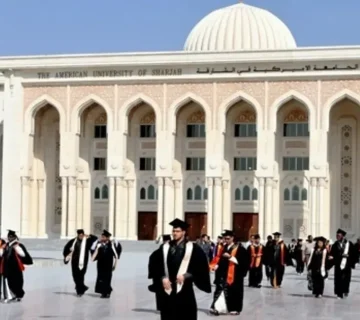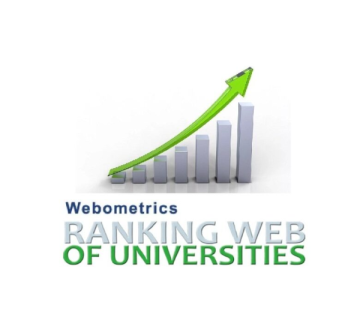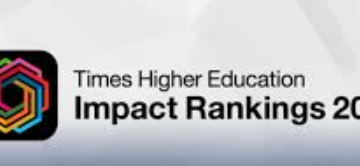Credibility of International University Ranking Standards: A Comprehensive Analysis
The credibility of international university ranking systems has been a subject of intense debate among academics, policymakers, and educational institutions worldwide. These rankings, such as QS World University Rankings, Times Higher Education (THE), and the Academic Ranking of World Universities (ARWU, commonly known as the Shanghai Ranking), claim to provide an objective evaluation of universities based on specific criteria. However, concerns about bias, conflicts of interest, and methodological limitations have raised questions about their reliability and fairness. This report delves into the credibility of these ranking systems, analyzing their methodologies, criticisms, and implications for universities globally. Overview of Major University Rankings QS World University Rankings The QS World University Rankings, established in 2004, is one of the most prominent global rankings. It evaluates universities based on several criteria, including academic reputation (40%), employer reputation (10%), faculty-to-student ratio (20%), citations per faculty (20%), and international faculty and student ratios (5% each) (Alpheratz Magazine). In 2023, QS expanded its criteria to include employment outcomes, environmental impact, and international collaboration, each weighted at 5% (Alpheratz Magazine). Times Higher Education (THE) Rankings The THE rankings, launched in 2004, assess universities based on teaching (30%), research (30%), citations (30%), international outlook (7.5%), and industry income (2.5%) (Economic Times). The methodology emphasizes research impact and international engagement, making it particularly appealing to research-intensive institutions. Academic Ranking of World Universities (ARWU) The ARWU, or Shanghai Ranking, was introduced in 2003 and focuses primarily on research output and quality. It evaluates universities based on Nobel Prizes and Fields Medals won by alumni and staff, highly cited researchers, articles published in Nature and Science, and overall research performance (Mawdoo3). Criticisms of University Rankings Methodological Bias One of the most significant criticisms of university rankings is their methodological bias, particularly favoring Western, English-speaking institutions. For example, QS and THE heavily emphasize research output and citations in English-language journals, disadvantaging universities in non-English-speaking countries (Alpheratz Magazine). This bias is evident in the consistent dominance of American and British universities in these rankings. Conflicts of Interest Conflicts of interest have also been highlighted as a major issue. For instance, QS has been accused of favoring universities that purchase consulting services from its parent company. A study by Igor Chirikov from the University of California, Berkeley, found that 26 Russian universities that partnered with QS improved their rankings significantly, despite questionable data accuracy (Alpheratz Magazine). Overemphasis on Research Most ranking systems prioritize research output over teaching quality, community engagement, and other important aspects of higher education. This focus incentivizes universities to prioritize publishing in high-impact journals, often at the expense of undergraduate education and societal contributions (Economic Times). Manipulation of Data There have been instances of universities manipulating data to improve their rankings. For example, some institutions have inflated their faculty-to-student ratios or reported exaggerated research metrics (Alpheratz Magazine). Impact on Universities Positive Impacts Global Visibility: Rankings provide universities with global visibility, attracting international students and faculty. Benchmarking: They serve as benchmarks for universities to assess their performance and identify areas for improvement. Funding and Partnerships: High rankings can lead to increased funding and partnerships with industry and government. Negative Impacts Pressure on Institutions: The pressure to perform well in rankings has led some universities to adopt unethical practices, such as incentivizing faculty to publish in high-impact journals or manipulating data (Alpheratz Magazine). Neglect of Local Needs: In their quest for global recognition, universities may neglect local needs and priorities, particularly in developing countries. Exclusion of Non-Elite Institutions: Rankings often exclude smaller, less research-intensive institutions, perpetuating inequality in higher education. Alternatives and Reforms Alternative Approaches Regional Rankings: Regional rankings, such as the Times Higher Education Arab University Rankings, provide a more localized perspective, considering regional contexts and priorities (Alamarabi). Multidimensional Rankings: Systems like U-Multirank offer a more comprehensive evaluation by allowing users to customize rankings based on their preferences (Shamaa). Proposed Reforms Transparency: Ranking organizations should disclose their methodologies and data sources to enhance credibility. Inclusivity: Rankings should consider diverse metrics, such as teaching quality, community engagement, and sustainability. Third-Party Audits: Independent audits can ensure the accuracy and fairness of rankings. Conclusion While international university rankings provide valuable insights into the performance of higher education institutions, their credibility is undermined by methodological biases, conflicts of interest, and overemphasis on research. To address these issues, ranking organizations must adopt more transparent, inclusive, and context-sensitive approaches. Universities, in turn, should focus on holistic development rather than solely chasing rankings. By doing so, the global higher education landscape can become more equitable and reflective of diverse educational priorities. References Alpheratz Magazine. (2024, August 6). التصنيفات العالمية للجامعات: تحيز ومصالح وغياب الموضوعية — مجلة الفراتس. Retrieved from https://alpheratzmag.com/arguments/2024080601/ Alamarabi. (2023, November). تصنيف التايمز للجامعات العربية 2023 بمنهجية معدلة — عالم عربي. Retrieved from https://alamarabi.com/2023/11/تصنيف-التايمز-للجامعات-العربية-2023/ Economic Times. (2016, September 29). تصنيف «كيو إس» الدولي للجامعات .. ونظرة مقارنة | الاقتصادية. Retrieved from https://www.aleqt.com/2016/09/29/article_1089720.html Shamaa. (2017, March). أي مصداقیة لمعاییر التصنیف الدولي للجامعات؟ Retrieved from https://search.shamaa.org/FullRecord?ID=251105 Mawdoo3. (2025, February 10). تصنيف شنغهاي للجامعات 2025 وأفضل 10 جامعات عربية — موقع الليث. Retrieved from https://svobodni.si/تصنيف-شنغهاي-للجامعات/








No comment